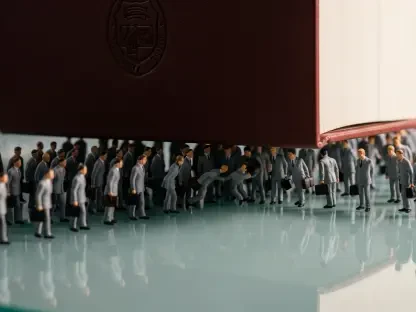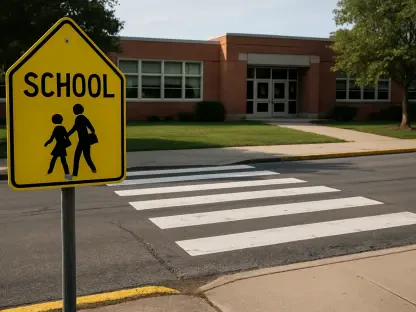Colorado is facing significant challenges in implementing new rules aimed at ensuring high-quality standards in its universal preschool program. The implementation of these standards, which include new requirements on class size, curriculum, and teacher training, has been postponed for the third time, now pushed to July 2026, six years after funding was approved by Colorado voters.
Implementation Delays
Initial Rollout and Extensions
Despite the state’s commitments to deliver high-quality preschool education to all 4-year-olds in Colorado, the program’s rollout has encountered several delays. Initially, state officials intended to set the new standards into motion right after the program’s 2023 launch. However, repeated complications eventually moved the timeline. The hurdles to implementation have stretched the process across several years, resulting in frustration among stakeholders who were expecting immediate improvements in early childhood education quality.
Feedback gathered from preschool providers during the initial rollout suggested widespread feelings of confusion and an overall sense of being rushed by the proposed rules. During a meeting of the Rules Advisory Council, it was revealed that state officials, in addition to not yet releasing the planned list of approved curricula, were struggling with logistical challenges. These setbacks were substantial enough that the plan’s deadline had to be continually revised, shifting from an initial completion goal of July 2024, then to 2025, and now set for 2026.
Advisory Committee and Criticisms
The state advisory committee granted preliminary approval to the latest delay in the implementation of the new preschool standards. This decision, however, has not been without critique. The Department of Early Childhood, responsible for overseeing the universal preschool program, has found itself under significant scrutiny from state lawmakers and other stakeholders dissatisfied with the delays. Lawmakers have frequently vocalized their concerns over various shortcomings within the program.
Despite facing operational criticism, the universal preschool initiative remains popular with families across Colorado. Creating a demand for better and more standardized early childhood education, the program currently accommodates approximately 65% of the 4-year-old age group within the state, accounting for around 42,000 children. The initiative provides most of these children with 15 hours of tuition-free preschool each week, although a select group benefits from up to 30 hours weekly.
Current Enrollment and Quality Variations
Popularity Among Families
The universal preschool program has experienced considerable enthusiasm from families, emphasizing the importance and need for early childhood education. With an impressive enrollment figure of around 42,000 4-year-olds, the program has successfully attracted parents looking to give their children a strong educational foundation. Such notable participation indicates widespread approval and substantial trust in the state’s vision for preschool education, despite the operational delays and criticisms.
However, beneath this enthusiasm lies a significant disparity in the quality of education being delivered to these preschoolers. While some institutions within the program adhere to rigorous standards, providing top-tier facilities and highly trained staff, others fall short, only meeting basic health and safety guidelines. This inconsistency marks a crucial area of concern and reiterates the urgency for implementing standardized quality regulations to ensure an equitable early childhood education for all enrolled children.
Provider Quality Discrepancies
The quality of preschool education provided under Colorado’s universal preschool program varies widely among different providers. Some preschools excel, offering robust curricula, well-maintained facilities, and highly trained educators, contributing to a high standard of early childhood education. These top-tier institutions set a benchmark for the kind of quality that the state’s new standards aim to make universal. However, not all preschools within the program reach this level of excellence.
Numerous providers struggle to go beyond the basic health and safety standards, leading to an inconsistency in the educational experiences of Colorado’s preschoolers. This disparity underscores the pressing need for the state’s proposed quality regulations focusing on class size, curriculum, and teacher training. The ultimate goal remains to ensure that every child within the universal preschool program receives a high-quality education, setting the stage for long-term academic and personal success.
Controversial Standards
Class Size and Ratio Debates
The rules regarding class size and teacher-student ratios have emerged as central points of contention in the proposed standards. Initially, the state suggested adhering to existing child care licensing rules, which allowed up to 24 children per class with a 1:12 teacher-student ratio. However, experts pushed for stricter limits, advocating for a maximum of 20 children per class and a 1:10 ratio, aligning with recommendations from national early education organizations.
These proposed limits have led to significant debate. On one hand, smaller class sizes and lower teacher-student ratios are recognized as vital components for providing high-quality preschool education, as they allow for more individualized attention and better management. On the other hand, many preschool providers expressed concerns about the practical and financial implications of these proposed limits, fearing that they could disrupt their operational viability and financial stability.
Compromises and Phased Plan
In response to the concerns raised by preschool providers, state officials introduced a phased plan that attempted to strike a balance between enforcing high-quality standards and addressing the practical challenges faced by preschools. Under this compromise, most schools would have to cap their classes at 20 students with a 1:10 teacher-student ratio. However, those institutions with a Colorado Shines rating of Level 4 or 5 would be allowed to maintain the higher limit of 24 students with a 1:12 ratio.
Despite these adjustments, resistance from some private preschool operators remained strong. Many argued that reducing class sizes, even under the phased plan, would result in significant financial losses. These providers emphasized that the new standards could potentially hurt their ability to sustain operations, as reduced class sizes would directly impact their revenue streams. This ongoing resistance highlights the complex challenges that state officials face in implementing these quality standards.
Provider and State Officials’ Response
Financial Concerns from Providers
The financial concerns of preschool providers have been a significant issue in the debates over the proposed standards. Kelly Beal, owner of Honey Tree Preschool, voiced her worries regarding the economic impact of the new size restrictions, questioning whether there would be any compensations for the income losses that preschools might face. Similarly, Colin Stewart from STEM Child Care raised concerns about the feasibility and necessity of maintaining the specific class size and staffing standards, given that kindergarten classes often have larger sizes.
These economic concerns reflect a broader anxiety among preschool operators, who fear that the financial drawbacks of implementing stricter standards might outweigh the educational benefits. The apprehension over potential income deficits due to mandatory class size reductions highlights the need for a balanced approach that considers both quality education and financial sustainability for providers.
State’s Response to Criticism
The objections raised by providers during public meetings seemed to catch state officials off guard. Recognizing the validity of these concerns, officials decided to gather more insights from the department’s universal preschool team before proceeding with the new regulations. This decision underscores the state’s commitment to a collaborative and informed approach in implementing the quality standards, aiming to address both educational and practical considerations.
Understanding the gravity of the criticisms, state officials have shown openness to further dialogue and adjustments. They acknowledge that successfully rolling out these standards necessitates a careful balance between upholding high-quality educational outcomes and ensuring the economic feasibility for providers. As the state continues to navigate these challenges, the ultimate objective remains to achieve a universally high standard of preschool education that benefits all children.
Support and Challenges
Mixed Reactions from Advisory Council
During a recent meeting, the Advisory Council displayed a range of reactions to the proposed class size and ratio rules. While no members openly supported these specific standards, some attendees expressed their endorsement of overarching quality measures through the chat function. These mixed responses reflect the complex landscape of opinions surrounding the implementation of uniform quality standards in such an expansive and diverse program.
One of the supporting arguments in favor of stricter teacher-student ratios referenced the developmental differences between 4- and 5-year-olds. Advocates for the proposed 1:10 ratio emphasized that younger children require more individualized attention to foster their development effectively. Despite these arguments, the challenges of implementing these standards across all providers remain a significant hurdle.
Balancing Quality and Practicality
Colorado is grappling with major issues in rolling out new regulations designed to ensure top-notch standards in its universal preschool program. These regulations are aimed at enhancing the quality of preschool education through stringent requirements on class sizes, curriculum development, and teacher training. The plan, intended to elevate the state’s preschool offerings, has encountered multiple delays. Initially approved for funding by Colorado voters, these reforms have now been postponed for the third time. The latest delay has pushed the implementation deadline to July 2026, marking a significant six-year gap between the approval and the expected implementation. This extended timeline highlights the challenges and complexities involved in overhauling the preschool system to meet higher educational standards. As Colorado works through these hurdles, the state’s commitment to providing superior early childhood education remains a focal point, but achieving these objectives entails overcoming substantial obstacles, both logistical and financial.









